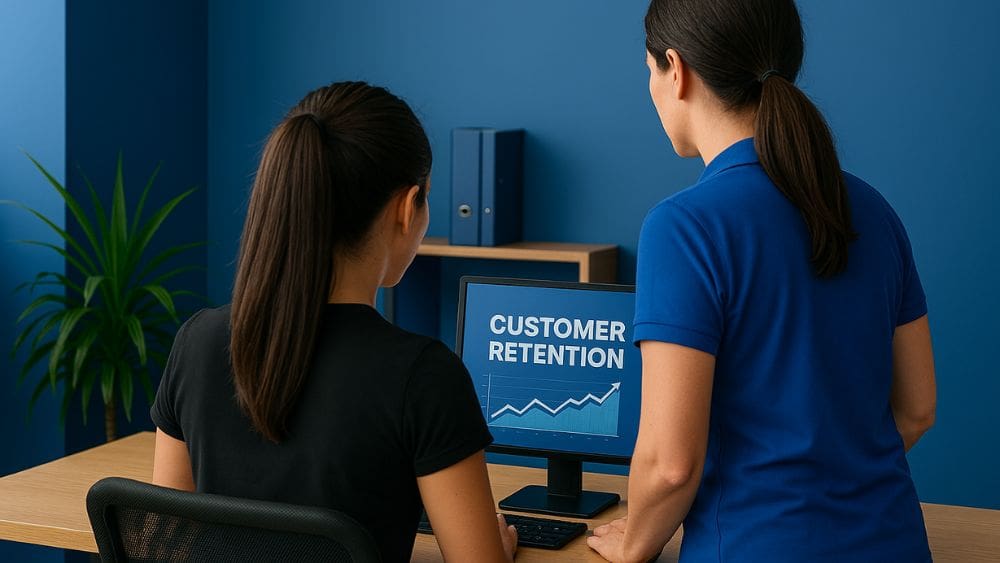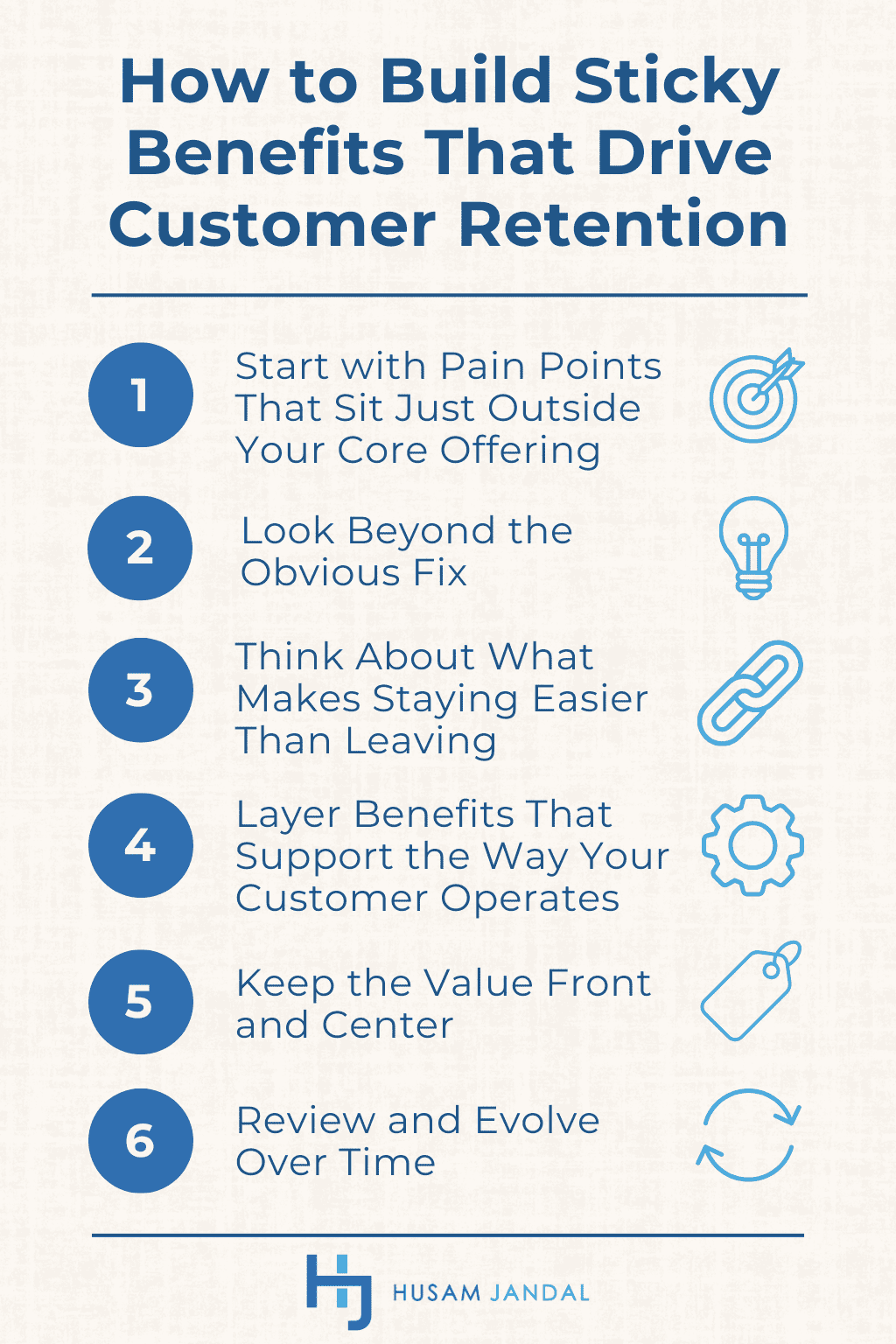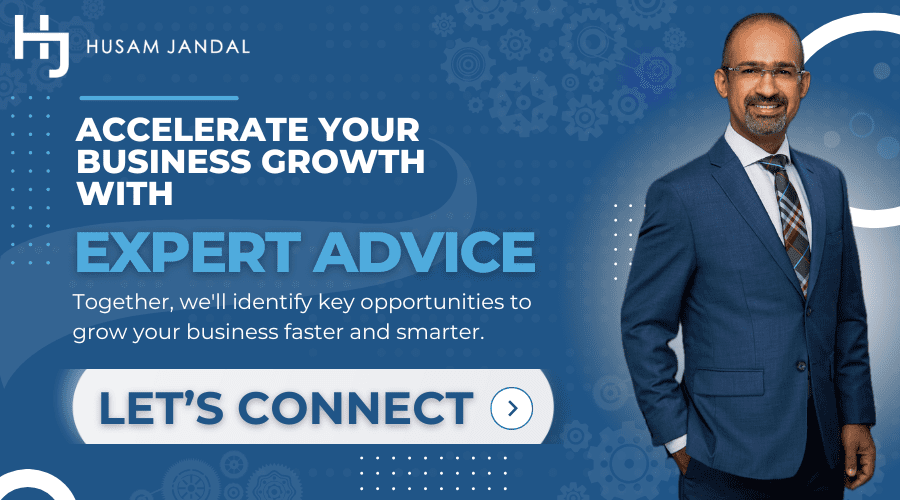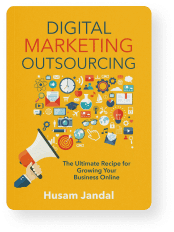
When people talk about digital marketing, the underlying current is growth. How can I grow my sales? How can I grow my customer base? This, in turn, typically leads people down the path of: How do I attract more customers?
We invest in activities such as search engine optimization (SEO), pay-per-click (PPC) advertising, and content marketing with this in mind, but this approach has one major shortcoming: it doesn’t address what happens when you actually win their business. You’ve made a sale, but without the right customer retention strategies in place, you may find yourself working just as hard to make the next one.
Moreover, it can cost up to 25 times more to attract a new client than to retain one, as Harvard Business Review (HBR) reports. And, we know that existing customers are more likely to purchase from you. Close rates tend to range from five to 20 percent with new customers, but they’re roughly 60 to 70 percent with existing ones, per Semrush. It’s not surprising, then, that as little as a five percent boost in customer retention increases profitability by up to 95 percent, according to Small Biz Genius.
Simply put, there’s significant value in customer retention, and if your goal is to create lasting business growth, it deserves the same level of attention as your lead and sales generation tactics do. This is why I work with my clients to develop sticky benefits. Give me a few moments, and I’ll walk you through the powerful psychology behind them and how to craft your own.
Stickiness, Retention, and Loyalty Work Together to Build Stronger Customer Relationships
The words “retention,” “loyalty,” and “stickiness” are often used interchangeably, but each represents something different, and understanding how they work together can help you strengthen the relationships that drive your business forward.
Retention is the Result
Customer retention reflects whether someone is still doing business with you. Maybe they’ve renewed a contract, placed another order, or simply haven’t left. On the surface, that looks like success. But retention alone doesn’t tell you much about the health of the relationship.
Are they actively engaging with your services? Are they still getting value? Are they growing with you? If not, retention might just mean they haven’t gotten around to switching yet.
Stickiness is the Behavior Behind Retention
Stickiness is what makes customers keep coming back. It’s the day-to-day or week-to-week usage that shows your business is woven into how they operate.
Sticky benefits are what drive this. When your offering becomes part of how your customers solve problems, manage workflows, or make progress, they keep using it. And when they keep using it, they tend to stick around.
In that sense, customer stickiness is not separate from retention. It’s what makes retention possible. Without usage, you don’t have a retained customer. You have a quiet one who could very well be on their way out.
Loyalty is the Relationship That Forms Over Time
Loyalty speaks to the emotional side of the customer relationship. Rather than being tied to usage or outcomes alone, it reflects trust, belief, and preference. Loyal customers choose to stay with your business because they value the experience and connection you provide.
However, loyalty doesn’t develop in a vacuum. It usually grows out of a sticky, high-value relationship. When customers see consistent results and feel supported, loyalty follows.
Sticky Benefits Speak to Known Pain Points and Subconscious Thoughts
Developing strong sticky benefits for your business means getting inside the minds of your customers. While there are differences in what matters most depending on whether you run a business-to-consumer (B2C) or business-to-business (B2B) company, the core stays the same. If you’re addressing their pain points and the thoughts that rest just beneath the surface, people will stay. In fact, they’ll be happy to stay and genuinely feel like there’s no alternative solution that supports their needs like you do.
People Repeat What Feels Good
Most of us are familiar with the mechanisms behind repetitive behaviors. Positive interactions give our brains a flood of dopamine, which feels good. Our brains then learn to associate a specific activity with that surge, and we begin seeking it out.
When we think of this in the context of business offerings, the whole customer experience (CX) needs to be taken into account. For instance, maybe your service saves time for your customers. When the work is done and they’re enjoying the final benefit, that’s a win that their brain will catalogue and want to repeat. Or maybe you run a software company with a top-notch customer care program, and one of your onboarding specialists proactively reaches out to see how things are going. During a call, a customer acknowledges they’re struggling to complete a specific action with the software. Your agent walks them through it and gives them a few advanced tips. That’s another win their brain will recognize and seek out.
People Go to Great Lengths to Avoid Losses
Business leaders, and sometimes even marketers, can become hyper-focused on individual benefits. For instance, let’s say that you run a staffing agency, and your clients benefit from well-trained, background-checked personnel on demand. You’re providing a solid service, and your clients appreciate it. But, if someone shows up tomorrow and offers the exact same options for ten percent less, how many of them will leave?
A well-crafted sticky benefit makes them pause. It makes your customer feel discomfort over the idea of leaving. In this case, let’s say your business developed an app where your clients can keep a shortlist of their preferred workers, check who is available for specific shifts, and instantly book them. The other staffing company may offer better rates, but giving up this kind of ease and control over who’s coming into your workspace is hard to part with.
In the world of psychology, the concept is referred to as “loss aversion.” In fact, researchers believe the pain of losing is felt twice as strongly as the pleasure of gaining, according to Behavioral Economics.
Value Becomes Stickier When It’s Bundled
A single sticky benefit can be incredibly powerful, but when you bundle sticky benefits, you cultivate a full ecosystem that moves people from the idea that leaving would be uncomfortable to the idea that leaving is unfathomable.
Take the staffing agency example we just walked through. Offering an app that allows clients to save preferred workers and instantly book shifts solves a real pain point, and it’s already a strong differentiator. But something shifts when you build on it with features like mobile check-ins that eliminate manual timekeeping or a dashboard that helps clients stay ahead of expiring certifications. You’re no longer just solving isolated problems. You’re supporting the way your client operates. You’re becoming part of their system.
At that point, it’s not about whether someone else offers a better rate. It’s about everything they’d lose by starting over.
How to Build Sticky Benefits That Drive Customer Retention

Now that we’ve covered the benefits and methodology, let’s take a look at how to start using sticky benefits in your customer retention strategy.
1. Start with Pain Points That Sit Just Outside Your Core Offering
It’s easy to look at what your product or service already solves and try to enhance it. However, sticky benefits often come from solving problems that aren’t quite your responsibility but still affect your customers’ experience.
For example, if you run a staffing agency, your job is to provide reliable workers. However, your client may also be dealing with scheduling headaches, compliance tracking, or timekeeping issues. Helping with those needs, even in small, low-lift ways, can create powerful retention hooks that go beyond your primary deliverable.
2. Look Beyond the Obvious Fix
Once you spot the pain point, don’t just offer a surface-level solution. Think in terms of workflow. What would make your customer’s life easier in the context of that challenge? Maybe it’s automation. Maybe it’s visibility. Maybe it’s not having to ask for something twice. The stickiest benefits feel like a missing puzzle piece, not an extra feature.
3. Think About What Makes Staying Easier Than Leaving
This is the real test: Would a competitor be able to match the benefit you’re offering without asking your customer to give something up?
Sticky benefits work best when they’re hard to replicate or decouple. If using your business means better insights, more seamless processes, or saved time they’ve already come to rely on, the idea of switching starts to feel like a setback, not an upgrade.
4. Layer Benefits That Support the Way Your Customer Operates
When benefits are layered to solve related problems, they reinforce one another. It’s the difference between offering a helpful tool and offering a system. The more your services or features integrate into how your customer works, the more deeply you’re embedded, and the more durable the relationship becomes.
5. Keep the Value Front and Center

Even the best sticky benefit won’t work if your customer forgets it’s there. Make the value visible. That could mean reducing clicks, improving onboarding, or surfacing reminders about time saved or results delivered.
When people can see and feel the benefit without digging for it, they’re more likely to use it and keep coming back to it.
6. Review and Evolve Over Time
Customer needs change. What feels sticky today might become expected tomorrow. That’s why sticky benefits should be revisited regularly, especially as you deepen your understanding of how your customers engage with them.
Keep an eye on metrics that show whether the benefit is delivering value. That might include usage rates, customer feedback, renewal rates, or even time saved on both sides. When you track what’s working and what’s being ignored, you can refine your approach and double down on the benefits that actually drive retention.
Get Help Strengthening Your Customer Retention Strategies
When people approach me as a digital marketing consultant, it’s almost always with the mindset of acquiring more customers or generating new sales. And, we do address that through a variety of digital marketing initiatives. However, the real, lasting transformation occurs when we begin pairing that with other aspects of digital marketing, sales, and operations that most agencies and consultants don’t. This includes addressing customer retention and developing tailored sticky benefits.
If your business isn’t growing at the rate it should, has flatlined, or is even shrinking, it’s time to start looking at the business holistically. Connect with me for a complimentary consultation.
FAQs on Customer Retention Strategies and Sticky Benefits
How do sticky benefits help improve long-term customer loyalty?
Sticky benefits make your service more valuable over time by becoming part of the customer’s routine or workflow. This deeper integration builds trust and reliance, which naturally supports loyalty. When customers depend on your service to run smoothly, they’re far less likely to consider switching.
What’s the difference between a product feature and a sticky benefit?
A product feature is something expected. It’s part of what your product or service is designed to do. A sticky benefit goes further by solving problems that sit just outside your main offering. It adds value in a way that makes your business feel harder to replace.
How can I identify sticky benefit opportunities in my business?
Start by looking at what your customers are trying to do before, during, or after they use your service. Ask where friction exists. Sticky benefit opportunities often show up in adjacent tasks—things you don’t currently solve but could support to make their lives easier.
What are examples of sticky benefits in service-based businesses?
In a service business, sticky benefits might include real-time dashboards, scheduling tools, or integrated check-ins that save your client time. These benefits often address workflow challenges or offer added visibility, making the client more likely to return because the service becomes embedded in their process.
Can small businesses create sticky benefits without adding complexity?
Yes, and they often should. Sticky benefits don’t need to be expensive or technical. Even a well-timed reminder, quick-access tool, or small reporting add-on can make a big difference. The key is to identify low-effort ways to make your service more useful and memorable.
How do sticky benefits compare to loyalty programs?
Loyalty programs encourage repeat business through incentives like points or discounts. Sticky benefits drive repeat business by improving the customer experience itself. Instead of rewarding loyalty after the fact, sticky benefits make your business easier to work with, so customers stay by choice, not just for a reward later.
What are the most effective customer retention strategies for B2B companies?
For B2B companies, retention strategies often center around improving customer experience and creating operational value. Sticky benefits like automated reporting, compliance tracking, or integrated systems help businesses run more efficiently, making your company an extension of their team rather than just a vendor.
How can I measure whether a sticky benefit is working?
Look at usage and engagement first. If customers aren’t using the benefit, it’s not helping. Then, review retention rates, renewal frequency, and any feedback related to ease of use or satisfaction. If the benefit is working, it will show up in both behavior and long-term results.



































































